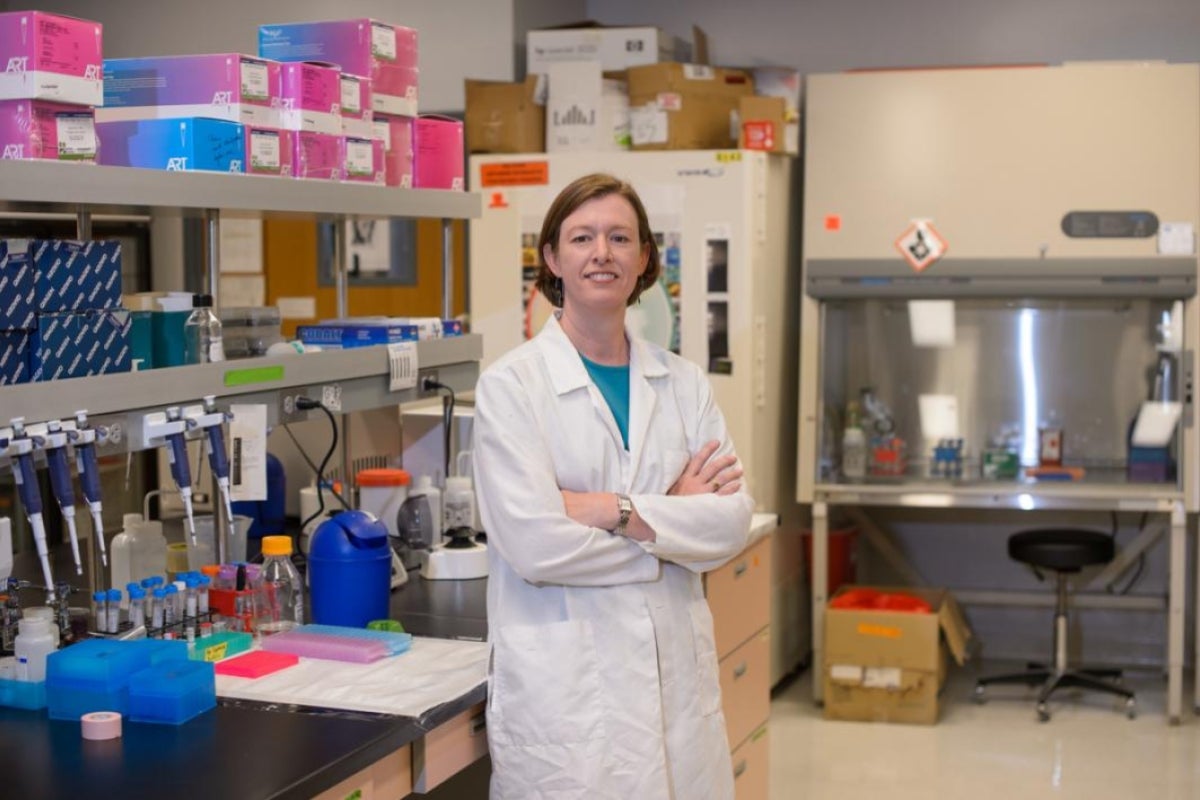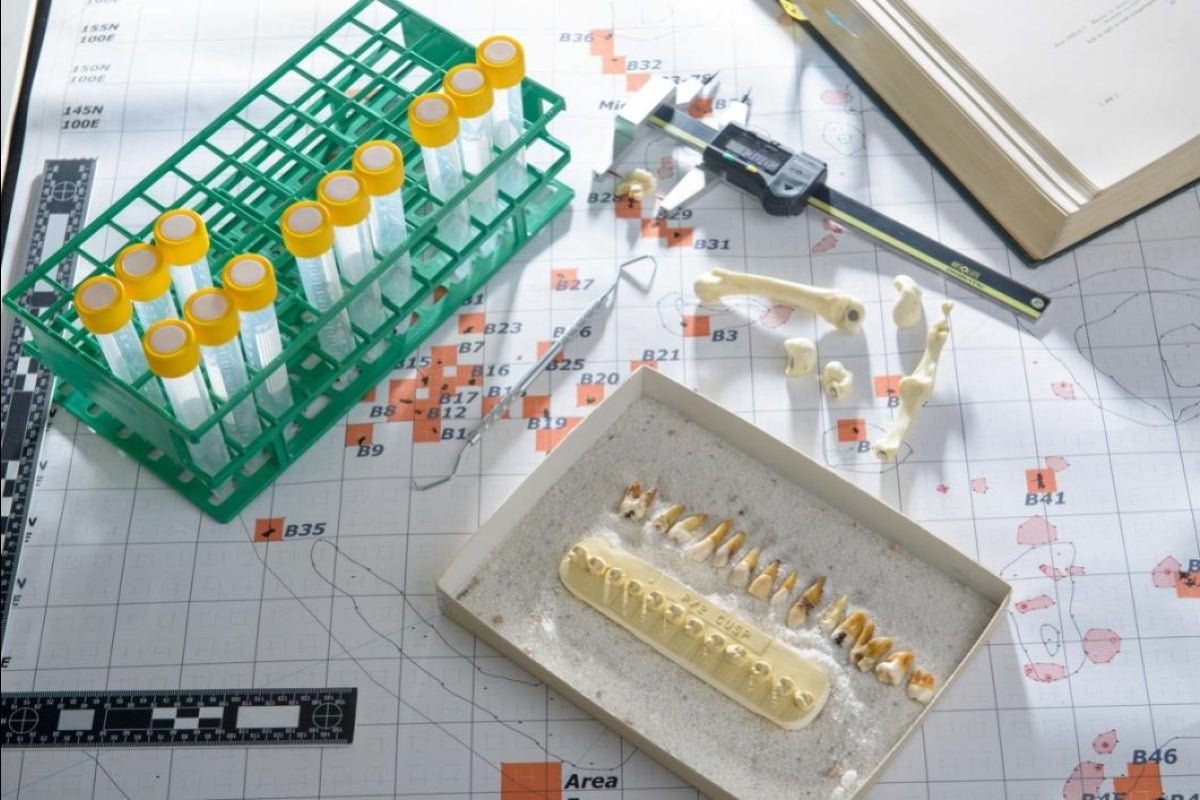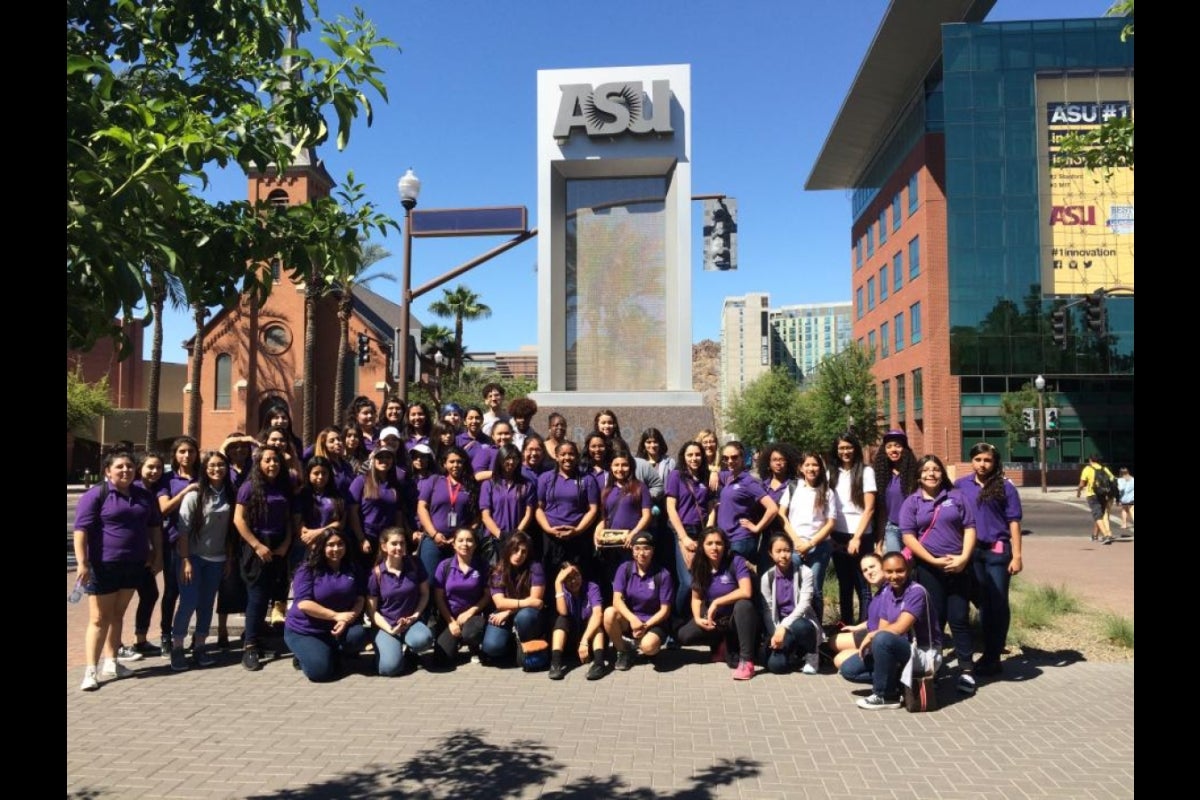ASU partnership inspires young women to pursue science

Bioarchaeologist Kelly Knudson, director of the Archaeological Chemistry Laboratory, welcomed students from the Girls Leadership Academy of Arizona during their visit to ASU.
Kent Johnson is a graduate student at ASU’s School of Human Evolution and Social Change (SHESC). His wife, Theresa Johnson, teaches life sciences at the state’s first all-girl public school, the Girls Leadership Academy of Arizona (GLAAZ). Together, they had an idea: they would help their schools join forces and encourage GLAAZ students to become the next generation of female scientists.
Last April, they brought a group of high schoolers to tour SHESC labs. The girls visited the Osteology Laboratory, the Laboratory of Molecular Anthropology and the Archaeological Chemistry Laboratory (ACL), where they were given personal tours by professors and lab directors Anne Stone and Kelly Knudson.
The students got an extra surprise in the ACL and heard from three female graduate students: Sofia Pacheco-Fores, Allisen Dahlstedt and Elise Alonzi. Each graduate had a chance to explain her research and expand the visiting students’ knowledge about what paths would be available to them as career scientists.
This was not the GLAAZ students’ first exposure to the might of SHESC’s female scientists, however. Three grad students visited the high school earlier in the year, Pacheco-Fores among them.
“Kent Johnson put together a Women in Science lecture series at GLAAZ to encourage young women to pursue careers in the sciences. I gave a guest lecture at GLAAZ about the experiences that led me to pursue a career in archaeology, as well as about my research on human sacrifice in central Mexico,” she explained.
The whole idea for the SHESC-GLAAZ Outreach Program was born out of a simple desire to inspire high school girls’ future participation in the sciences.
“My husband approached me with the idea to promote our girls meeting and listening to women in science and anthropology. I jumped at the idea; the more positive role models we can expose our girls to, the better,” Theresa Johnson said.
Kent Johnson explained that he and his wife had several goals when they organized the program. First, they wanted to introduce the high school students to anthropology, particularly the specializations within anthropology related to biology and chemistry.
“Many of the high school students are interested in majoring in a science-related field, but they often are unaware of science-based majors and careers outside of health and medicine,” he said.
They also believed it was important for the students to hear from women in science and learn about their experiences in graduate school and in the field. As an added bonus, the program gives the SHESC grad students a chance to promote their research, as well as the school itself.
Overall, Theresa Johnson believes they’ve been very effective, because she’s seeing the results for herself.
“This program has increased the students’ awareness of career options and various majors within the fields of anthropology and science. I find that the girls are engaging in conversations involving what majors they will pursue in the future. They are talking about options at ASU and looking forward to becoming Sun Devils,” she said.
Kent Johnson attributes the tremendous impact of the program to the people at SHESC.
“SHESC faculty and graduate students have been very supportive of the program from the very beginning. Their support and participation helped make the program a great success,” he said.
With such encouraging outcomes so far, it makes sense that the Johnsons — and SHESC — want to continue this partnership in the future. Possibilities for the students at GLAAZ include more guest lectures in the fall and even scientific internships.
“We are working with Kelly Knudson to develop an internship program for our girls to help some graduate students in SHESC and promote our partnership with the department,” Theresa Johnson said.
Knudson, an associate professor at SHESC and the director of the Archaeological Chemistry Lab, is eager to apply her experience to the new challenge of helping mentor high schoolers.
“Having students learning about archaeology and chemistry through hands-on laboratory work has been a very important part of our educational program in the Archaeological Chemistry Laboratory, but traditionally I’ve worked with undergraduate and graduate students. Bringing motivated high school students from GLAAZ to intern in the ACL will be a wonderful way to show them how science works and to expose them to different scientists at ASU,” she said.
At least one grad student has already taken steps to get the high school girls into some serious lab science.
“I am working with professor Knudson and GLAAZ to organize a volunteering opportunity for two to three GLAAZ students to assist me with my research in the ACL and get hands-on chemistry lab work experience,” Pacheco-Fores said.
Theresa Johnson commented that she is looking forward to continuing the SHESC-GLAAZ Outreach Program for years to come – and surely, little by little, raising up a small army of passionate new female scientists.
Written by Mikala Kass, School of Human Evolution and Social Change
More Arts, humanities and education

ASU workshop trains educators, professionals from marginalized communities in disaster science
As devastating as hurricanes can be to anyone caught in their paths, they strike marginalized communities even harder.To address…

ASU’s Humanities Institute announces 2024 book award winner
Arizona State University’s Humanities Institute (HI) has announced “The Long Land War: The Global Struggle for…

Retired admiral who spent decades in public service pursuing a degree in social work at ASU
Editor’s note: This story is part of coverage of ASU’s annual Salute to Service.Cari Thomas wore the uniform of the U.S. Coast…


